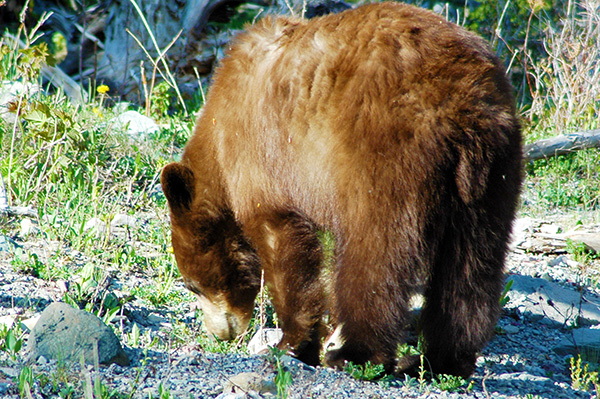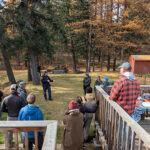Home »

Wildlife Protocols for Outdoor Recreation
 WildSafeBC strives to learn and to share about how we can reduce human-wildlife conflicts in all of our day-to-day activities. We must all think about how we live, work, play and grow with respect to wildlife.
WildSafeBC strives to learn and to share about how we can reduce human-wildlife conflicts in all of our day-to-day activities. We must all think about how we live, work, play and grow with respect to wildlife.
B.C. is one great big natural playground. We enjoy some of the world’s best mountain biking, hiking, canoeing, backcountry skiing, and the list goes on and on. While we have these great outdoor opportunities, we must also be mindful of the fact that we share the outdoors with all types of wildlife. It is our responsibility to ensure that our recreational pursuits do not contribute to human-wildlife conflict within the province.
For the most part, real wildlife wants nothing to do with humans. But there are times when wildlife may react defensively to your presence, and in the very rare instance view you as a menu item. Additionally, if wildlife has become habituated to humans or food conditioned then the risk of human-wildlife conflict can be increased.
Specific information on the various species can be found under our “Species” accounts but general rules include:
- Plan ahead. Know what type of wildlife you are apt to encounter while recreating. The more you know the better you will be able to react to an encounter with wildlife, or better yet, your knowledge may help prevent the encounter in the first place.
- Know the wildlife’s timetable. Are they in the area year round and can you schedule your recreation in that area to be at a time when the wildlife won’t be there? Or is there a daily routine for the wildlife? Often mid-day is a good time to avoid many types of larger predators and conversely, dawn and dusk, are inopportune times to be in the area.
- Wildlife avoidance is better than having to deal with wildlife directly. Whether it is bear, cougar or a defensive cow moose, it is always better to have avoided a confrontation than to have to try to survive one.
- Take wildlife safety training. Specific knowledge about bear, cougars, rattlesnakes and other species will allow you to carry out your job safely.
- Carry bear spray with you at all times. Bear spray is effective against all large mammals and should be your first choice as a deterrent.
Remember: If you need to report a sighting or a conflict with wildlife, please call the Conservation Officer Service at 1 (877)-952-7277.You can also check out the WildSafeBC website for more information. https://www.wildsafebc.com/.
– Submitted by Danica Roussy, Kimberley/Cranbrook WildSafeBC Community Coordinator







